The CUBE Reaction Hybrid HPA Race 500 is a mouth full… CUBE is the company, Reaction is the model line, Hybrid is how CUBE refers to all of their electric assist bikes (because they also sell traditional pedal-power only bicycles), HPA stands for high performance aluminum, Race is the trim level (lower and more affordable), and 500 refers to the battery pack size. It all makes sense, right?! Naming conventions aside, this is a sporty, hardtail, cross country style electric bike with nicer hardware, built to last. What sets it apart from many competing models is the premium Bosch motor system, higher battery capacity, quality 11-speed Shimano Deore XT drivetrain, powerful Shimano 180 mm hydraulic disc brakes, and six frame size options. Not to mention, the seat stays have mounting points for adding a disc brake compatible rear rack, like this. So, if you’ve only got enough money and space for one electric bike, but you want to be able to commute to work or ride around town during the week but still hit the trails on the weekend… this would be a solid option. At the time of this review, there weren’t many CUBE dealers in the United States. I visited Motostrano in Redwood City, California to compare the Race model back to back with the higher specced SL. With this model, for $400 more, you trade the colorful green or blue paint job for an all-black professional look. The battery pack is sunk into the downtube, making it more hidden and protected, and the motor is angled up and enclosed in a tighter shell that blends in and raises clearance slightly. Practically speaking, both ebikes offer a responsive ride, impressive range, and a wheel size jump based on your frame choice. To me, this last point is a big one! If you’re a more petite person or youth with a shorter inseam, the 27.5″ wheels are going to lower the bike and allow the frame to fit better (so you’re not hunched way over reaching for the bars or striking your toes on the front tire). These slightly smaller wheels are offered on the 16″ and 18″ frames. But then, when you start to get into the larger frame size options, the bike comes with a more traditional 29″ wheelset which increases rolling momentum, spans gaps more comfortably, spreads weight out more effectively, and raises the frame. The 29er wheels come on the 17″, 19″, 21″, and 23″ bikes. It makes perfect sense and also provides some choice in the 18″ and 17″ frames, so you can decide to have more nimble steering or a flowier feel with similar frames. Of course, this kind of frame and color choice does require engineering and stocking effort, so perhaps that’s why the bikes cost $3,399 vs. $2,999. The good news is, with all CUBE electric bikes, you get an industry leading two year comprehensive warranty (supported by Bosch) with great dealer support from shops like Cit-E-Cycles in Vancouver or Motostrano in SF.
Driving the Reaction Hybrid HPA Race is a Bosch Performance Line CX mid-motor. This is the high-torque, off-road offering from Bosch. In addition to producing up to 75 Newton meters of peak torque, it does produce some electronic whirring noises. In part, I believe, because the chainring spins at 2.5 revolutions for every single crank arm revolution. Notice how small that 15 tooth sprocket looks! If you’re pedaling without assist, perhaps if the bike is turned off, that sprocket is still turning 2.5k and there’s a bit of friction and noise (very little) and when I asked Bosch reps about the design, they said it provides excellent chain grab. Note the Aluminum alloy chainring guard, which acts as a guide when paired with the plastic motor housing. I have never dropped my chain when riding a Bosch powered electric bike, so it seems like their design is working? What I have heard about however, is occasional chain suck in muddy environments. This happens when the chain does not flow easily off the chainring, back towards the derailleur, and instead gets “sucked” up towards the chainstay. This issue does not seem widespread, but there are some hard core electric mountain bikers in the UK that have posted pictures and comments in the forums, so I was thrilled to see that CUBE opted for a nicer Shimano Deore XT derailleur with the Shadow Plus clutch feature. This little grey lever can be flipped up to provide more tension in the chain. It helps to reduce chain slap and chain suck! The other thing CUBE did with this bike, was to add a lower slap guard on the right chain stay. I occasionally review e-mountain bikes that have no slap guards, so this attention to detail was very impressive to see. Now, if you upgrade to the SL model, it comes with a fully rubberized guard vs. a clear sticker, which might look nicer after a lot of abuse on the trail. The Bosch Performance Line motors are quick to start and stop, I never feel out of control or wanting for support (even when starting). They provide up to 120 RPM support (so you can pedal fast without the motor dropping out, some motors drop at 100 RPM), and they even support shifting under power. This last feature is called shift detection and it’s designed to provide micro-gaps in power for the chain to quickly jump gears vs. mashing and bending the cassette sprockets. With eleven speeds here, that’s a nice feature to have. I feel the drivetrain overall, is excellent.
Powering the bike is a 500 watt hour battery pack, also designed and built by Bosch. This thing is the same size, color, and nearly the same weight, as the older Powerpack 400. And, it’s backwards compatible with the older mounts (or forward compatible if you have an old 400 pack laying around). Weighing in at ~5.7 lbs, the battery is compact, easy to carry around because of a plastic loop-handle on top, easy to understand because it has an integrated 5-LED charge level indicator, and can be charged when mounted to the frame or separately. I like these packs a lot, expect 30+ miles of range in most conditions even if you’re using the higher levels of pedal assist support. For those who pedal more actively and stay with Eco our Tour mode, you can get upwards of 80 miles per charge, even 100+ if you’re on smooth, flat, paved surfaces. Bosch provides a proprietary charger with all of the ebikes that use their drive systems, but lately, they have been sending 2 Amp chargers vs. the older 4 Amp which I believe would fill faster. I can’t say much about why they did this? Perhaps it’s a cost savings thing or maybe it’s easier on the battery cells? They seem to do it with the cheaper bikes, bikes that have the Purion display panel vs. the larger removable Intuvia. In short, the pack should still fill from completely empty to full in just over 6 hours. The charger is lightweight and small, very easy to toss into a backpack, and you could get a spare charger to leave at work or your destination of choice to avoid hauling it around all the time. You don’t have to charge after every ride but I recommend keeping the battery at 50%+ full, especially when storing for longer periods. Keep it in a cool, dry, location and don’t drop it ;)
Operating the Reaction Hybrid Race is quick and intuitive. Once you have charged and properly mounted the battery pack (being careful not to bump it into the lower portion of the top tube, since the fit can be tight on the smaller frames), just press the power button along the top edge of the Bosch Purion display panel. This brings up the battery capacity, current speed, and some ride menus. You can raise or lower power by clicking the large + and – buttons on the left side of the display… and I recommend clicking on the right edge of these buttons vs. lower down near the grip. This is because they click in at an angle, towards the LCD screen. On a couple of occasions, I have tried to click in the center of these buttons and had inconsistent results. That’s not the kind of distraction you want when riding technical terrain, but it’s not a huge deal, just something to learn how to do correctly. The Purion display is one of the most compact, sleek, and feature rich display panels on the market right now, but it is not removable. If you’re someone who is using the CUBE Reaction Hybrid for commuting purposes, this could result in some extra sun, rain, and rack-scratch wear. I have seen people click their helmets over their e-bike display panels to keep them out of sight. If you hold the – button, the different trip menus will cycle through including assist level (Eco, Tour, Sport, Turbo), max speed, average speed, trip time, trip distance, odometer, and estimated range. Regardless of which menu you choose to stay with, the assist level readout will show as you click + or – when riding to raise or lower power. Anyway, the Range readout is one of my favorites because it provides a lot more feedback than the five-bar battery indicator infographic. Range is dynamically calculated using the last mile of ride data, current battery capacity, and level of assist. It’s neat to click up or down on assist and then see range respond accordingly when you’re planning to go for a ride. It’s the kind of feature that can help you avoid pedaling or pushing a 46 lb bike with an empty battery back home. And one more cool feature of the Purion interface is that it has a walk mode button positioned at the lower edge. Press this button and then hold the + button to activate walk mode. It’s convenient when terrain gets too technical to ride or you’re trying to get your bike out of a cellar or up some stairs. My one other complaint about this display panel however, is that it does not offer a charge capable Micro-USB port the way that the larger Intuvia display panel does. This display can be swapped for the Purion by some shops and both systems can have lights wired in to run off of the main battery… again, if you plan to use this thing as a trail-capable commuter.
I really enjoyed riding this bike and discovering the differences between it and some of the other e-mountain models from CUBE. The air suspension fork with rebound adjust, 100 mm travel, and remote (handlebar mounted) lockout would come in handy when transitioning from smooth to bumpy terrain on the trail or in the city. There’s a moment int he video review above where Joe hits the brakes, and you can see the bike dive into the suspension, the remote lock would help you avoid this easily. I appreciate the fun colors and matching accent points (saddle, battery graphics, suspension, and wheelset stickers). Note that the wheelset has reinforcement eyelets to strengthen the rim, making it truly trail capable. Both wheels provide quick release for easier trail maintenance and transport. You could take the battery and wheels off quickly and then hang this on most car racks or bus racks… or shove it into the trunk of a friend’s car. The way the battery is mounted, onto the downtube vs. inset, and the larger motor casing do stick out a bit now that we have some streamlined options, people can more easily tell it’s an electric bike, but I’m not sure that’s worth $400 to change for me. This is one of the few electric bicycles that come in small enough sizes to fit youth riders, and having adjustable-reach brake levers helps to support smaller hands. I have heard that CUBE does not always include pedals, which is just an interesting sidenote, most dealers will toss in a pair or you can get something like this in multiple fun colors online. Another option I would consider for regular day rides (because of my sensitive back and neck) is a 30.9 mm suspension seat post. This and other CUBE bikes I have tested seem to have a tight seat tube, which is great once the seat is adjusted so it won’t slip, but there was some wear on the stock seat post for the bike I tried. For the best value, I like the Suntour NCX post but you’ll need a shim like this to fit, and that can compromise strength and make installation more tedious. So, consider the Thudbuster Short Travel (ST) for a perfect 30.9 mm fit from the get go. Installing one of these posts will make the bike feel more like a full suspension model without the higher price tag and weight, it will also still allow you to use a sturdy rear rack for commuting because of the mounting points CUBE included on the seat stays. One final note on the Bosch CX motor system, there’s a software update that turns Sport assist mode into eMTB mode which is a “do everything” level where you get more or less assist (all the way from none to full) based on pedal torque, not just the setting level. It’s great for those moments when you don’t want to be distracted by the button pad, like off-road riding. Big thanks to Motostrano for hosting me during some CUBE reviews and to CUBE for partnering with me on this post.
Pros:
- Available in six frame sizes! That’s more than almost every other electric bike I have seen and it means that you can really dial in fit and get your body geometry setup for maximum comfort, and it’s not just the frame size that changes, the wheelset also scales from 27.5” to 29” for a more elevatedbike on the 17”, 19”, 21”, and 23” models
- Fantastic 11-speed drivetrain with durable Shimano Deore XT derailleur, it has Shadow Plus clutch engagement to tighten the chain when riding off-road (click the little grey lever into the up position, or leave it down for easier shifting on smooth terrain)
- The Bosch motor controller provides shift detection which reduces strain on your chain, sprockets, and derailleur while the motor is in operation, it’s not perfect (you still want to ease off a bit if possible) but many other companies don’t offer any kind of detection system
- Motor and battery weight are positioned low and center on the frame, this is ideal for balance, the chain stays have been kept as short as possible to improve quick handling and response
- The CUBE Reaction Hybrid HPA Race 500 is perfectly equipped for a mix of urban travel and off-road trail, you can easily take the battery off for charging at work, you can add a rear rack because it has bosses, and you can lockout the suspension remotely (at the handle bar) when transitioning to different terrain
- This is a fairly lightweight electric bike, the CUBE Superlite Aluminum build is high-quality and with the air suspension and compact display panel I feel that it is on the lighter end while still very sturdy and trail capable (it’s slightly lighter than the SL model I tested)
- Diamond “high-step” frames tend to be very sturdy and easier to hang off of car and bus racks, this bike has a tapered head tube for strength which also opens it up to higher-end suspension
- Fantastic two year comprehensive warranty with standardized parts and a backwards compatible battery interface (that works with the older Powerpack 400) so you could get a second battery for less money to use on long trips
- Curved Aluminum alloy chainring protector keeps pants clear and clean, it’s tougher than some plastic protectors I have seen from other companies and doubles as a guide with the motor casing keeping the inside section on track so you won’t drop the chain as easily
- The Bosch Performance Line CX motor starts and stops incredibly fast, it is precise and smart (measuring rear wheel speed, pedal cadence, and pedal torque 1,000 per second), it’s perfect for off-road use
- Both wheels have quick release systems which makes trail maintenance and flat fixes easier, the axles are a more standard 9 mm diameter and not as sturdy or stiff as 12 mm and 15 mm thru-axles, but they are fine for light trail riding and cheaper to repair or replace
- For people who want a nimble and quick trail bike, the Reaction Hybrid HPA Race is an excellent choice because it uses 27.5″ tires vs. 29″ which weigh more and turn slower, this also lowers the bike and makes it easier to approach in the smaller sizes
Cons:
- Available in two fun, vibrant color schemes… the saddle, suspension fork, and rims all have colored accents to tie in, CUBE also sells a very similar SL model for $400 more which comes in all black if you prefer that look
- This is a minor consideration, the Bosch Purion display panel is compact which keeps the bars clear, but it is not removable or as deep as the larger Intuvia display, it also does not have a Micro-USB port built in that is active, I guess it depends on what you care more about, style and stealthy minimalism or functionality
- The Performance Line CX is the loudest motor I have tested from Bosch, because it is the most powerful… but the electronic whirring might bother some riders
- No bottle cage bosses on the seat tube or top tube, the addition of rear rack bosses is nice, but I would appreciate extra attachment points for a folding lock or mini-pump when riding without a rack, the battery is not sunk into the frame the way it is on some more expensive models like the SL and it takes up more of the triangle so perhaps that’s a trade-off (I was reviewing the smaller frame size so cannot say)
- The battery pack mounting plate is bolted onto a more tradition looking round downtube vs. the streamlined and “sunk” design used on some other more expensive models, as a result, the weight isn’t quite as low and the battery isn’t quite as protected or nice looking, similar situation with the motor housing being large and horizontal vs. semi-integrated and tipped up on the higher-end models
- On the smaller sized frames, be careful when removing the battery pack because the top tube is very close (to lower the stand over height) and you could bump the frame and mar the paint more easily because the battery goes up and down vs. mounting in from the side on on Yamaha, Shimano systems
- This is a minor consideration, I believe that many of the CUBE electric bicycles forego pedals, you might have to purchase some of your own aftermarket or from the shop
- In my experience, the Bosch Purion display panel clicks best when you press on the + and – buttons near the LCD screen vs. down low, they sort of click in at an angle and the pivot point is lower down, there are times when I tried to click in the exact center of the + and – buttons and it didn’t work as consistently… you can pay a bit more to have some shops upgrade the display panel for you to an Intuvia with more consistent buttons
- With a larger 500 watt hour battery pack, it would be nice to have the faster 4 Amp charger from Bosch vs. the Compact 2 Amp charger that I believe comes with this bike, at least the charger is lightweight and doesn’t have any kind of adapter to plug into the battery vs. on-frame charging port
- It seems like several of the CUBE electric bikes I tested had very tight seat tubes, we had to twist and turn to raise or lower the seat height and it marred the seat post a bit as shown on video around 16:08 minutes, the post is extra long at 400 mm so at least it provides a good range of fit (maybe for a young person who is growing rapidly)
Resources:
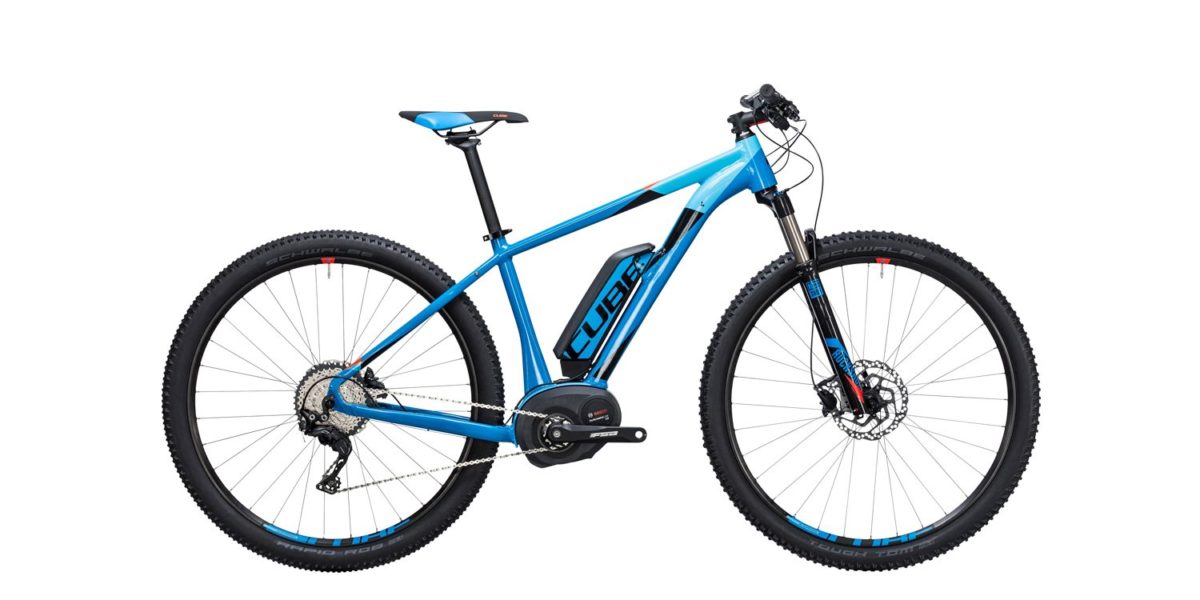










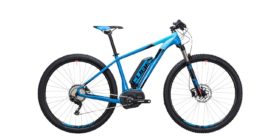
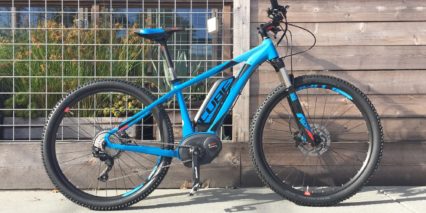
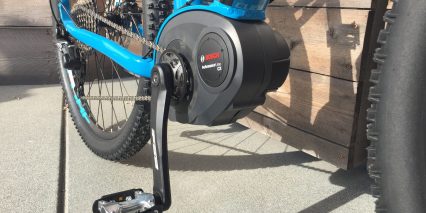

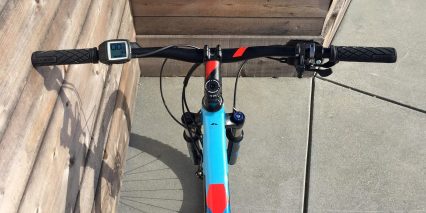
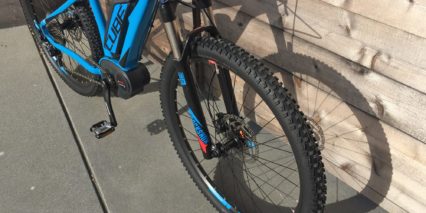
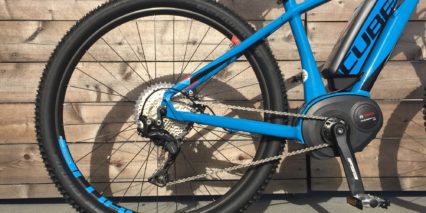
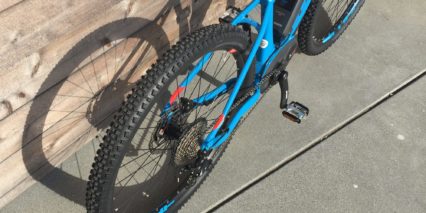
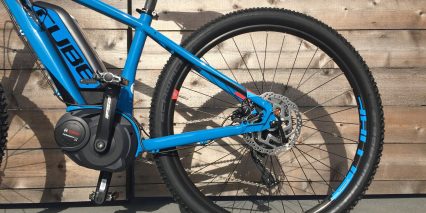



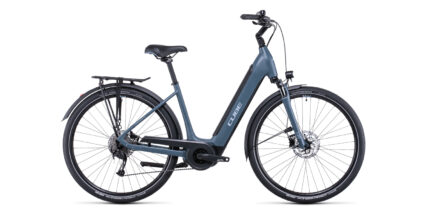
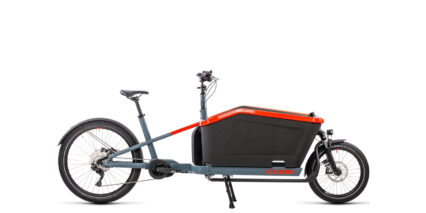
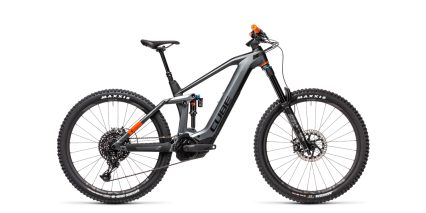
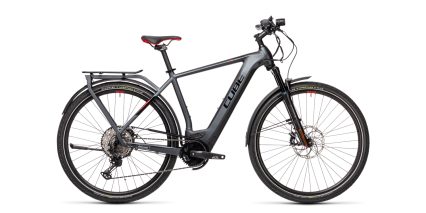
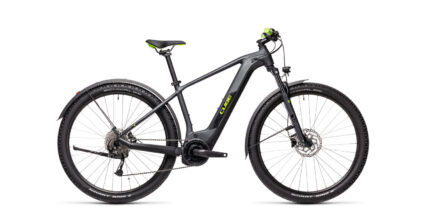
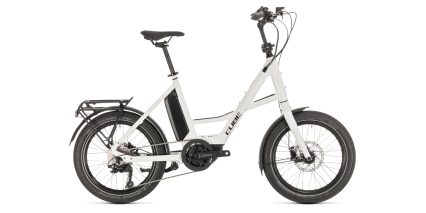
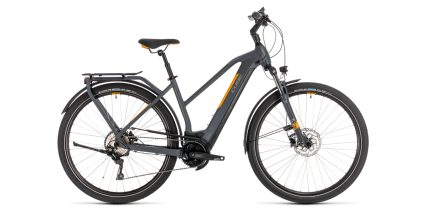
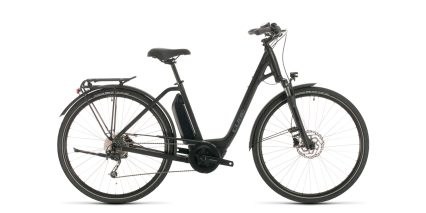
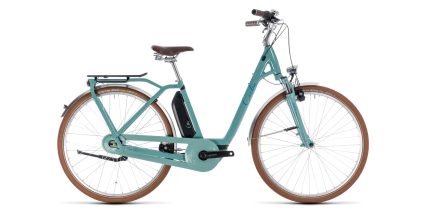
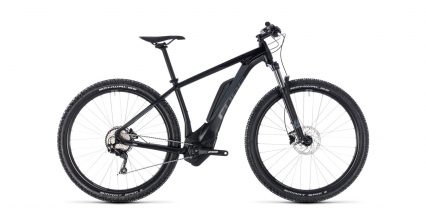
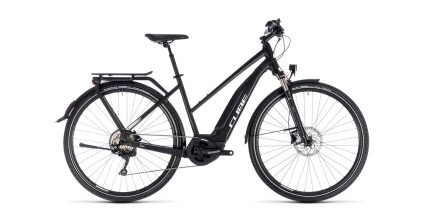
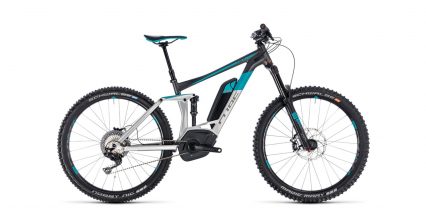
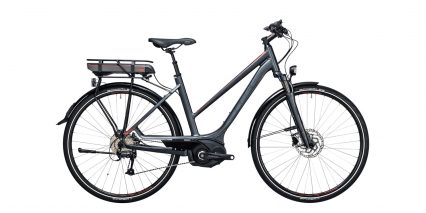
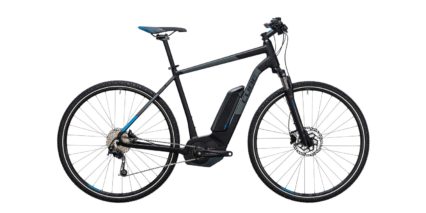
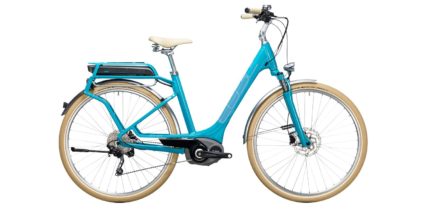
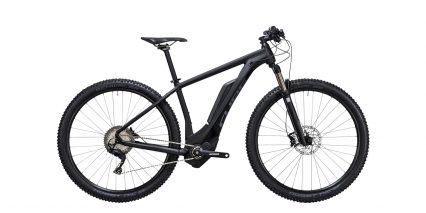
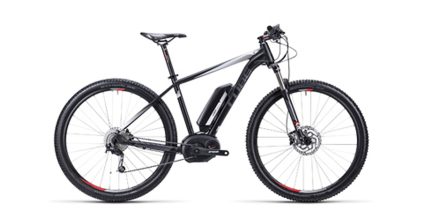
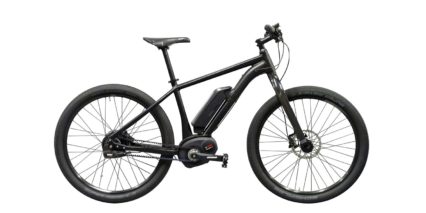
Be the First to Post a Comment